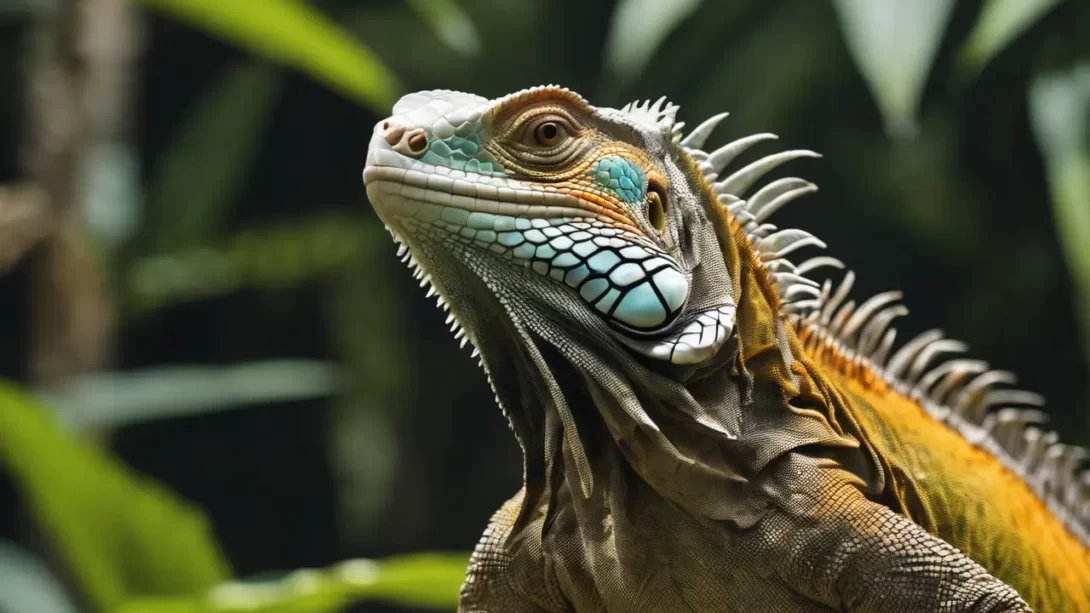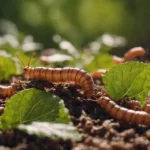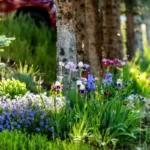Iguanas, belonging to the genus Iguana, are large, herbivorous lizards found primarily in Central and South America, as well as the Caribbean. These reptiles inhabit a range of environments, from rainforests to rocky regions. Despite their formidable size and often vivid coloration, iguanas have several natural predators that pose a threat to their survival. This introductory section will provide an overview of iguanas, their natural habitats, and general vulnerabilities to predators.
Common Predators of Iguanas
Iguanas face predation from various species, depending on their geographical location and habitat. Birds of prey, such as hawks and eagles, are common aerial predators, using their keen eyesight to spot iguanas from the sky. Mammalian predators include raccoons, opossums, and some large cats like jaguars, which can attack both juvenile and adult iguanas. Reptilian threats include snakes and larger lizards, which primarily prey on iguana eggs and young hatchlings. Each of these predators employs different strategies to hunt iguanas, affecting their survival rates in the wild.
Predation at Different Stages of an Iguana’s Life
The risk of predation for iguanas varies significantly throughout their life cycle. Iguana eggs are highly vulnerable to predation from small mammals and reptiles, including certain species of snakes and monitor lizards. Juvenile iguanas, due to their smaller size and developing defenses, face threats from a wider range of predators, including birds, larger reptiles, and mammals. Adult iguanas, with their larger size and more developed physical defenses, are primarily threatened by large birds of prey and big cats. Understanding these risks at different life stages is crucial for comprehending the survival strategies and adaptive behaviors of iguanas.
Human Impact on Iguana Predation
Human activities have significantly altered the predator-prey dynamics for iguanas. The introduction of non-native predators, such as dogs, cats, and rats, particularly on islands, has drastically increased the predation pressure on iguana populations. Habitat destruction due to urbanization and deforestation has not only reduced the natural habitat for iguanas but also made them more vulnerable to predators by exposing them to open areas. Additionally, the pet trade has led to the removal of large numbers of iguanas from their natural environment, impacting their population dynamics and exposing the remaining iguanas to a higher risk of predation.
Defensive Strategies of Iguanas
Iguanas have developed several defensive strategies to cope with the threats posed by predators. Physically, they possess spines along their backs and tails, which can be used to ward off attackers. Their coloration often blends with the surrounding environment, providing effective camouflage. Behaviorally, many iguanas live in groups, especially when young, to reduce individual risk. They are also known for their “flight” response; when threatened, iguanas can exhibit remarkable speed and agility, often seeking refuge in water bodies where they are proficient swimmers. These adaptations help iguanas to avoid predators and increase their chances of survival.
The Impact of Predation on Iguana Populations
Predation plays a significant role in the natural regulation of iguana populations. It affects not only individual survival rates but also broader behavioral patterns and evolutionary adaptations. In environments with high predation risk, iguanas may develop more cautious behavior, affecting their feeding and social interactions. Predation pressure can also influence physical characteristics over generations, contributing to the evolutionary process. However, the balance is delicate, and excessive predation, especially in areas with introduced predators, can lead to a decline in iguana populations, affecting their conservation status.
Conclusion
In conclusion, iguanas face a diverse array of natural predators throughout their life cycle, with threats ranging from birds of prey to mammals and other reptiles. The specific predators they encounter vary based on their geographic location and habitat, but common adversaries include hawks, eagles, raccoons, and large cats. The introduction of non-native predators by humans, along with habitat destruction and the pet trade, has further complicated the survival landscape for iguanas.
Iguanas have adapted to these threats with a range of defensive strategies, including physical defenses like spines and camouflage, as well as behavioral tactics such as group living and rapid flight responses. These adaptations are crucial for their survival and have significant implications for their behavior and evolution.
Predation plays a critical role in the natural regulation of iguana populations, influencing their behavior, social structures, and even physical evolution. However, the delicate balance of this predator-prey relationship can be easily disrupted, particularly by human activities. Conservation efforts are essential to ensure the survival of iguana species, particularly in regions where they face heightened risks due to human-induced factors.
Understanding the relationship between iguanas and their predators is vital for their conservation and for maintaining the balance of the ecosystems in which they live. As we continue to explore and appreciate the complexity of these interactions, it is important to remember the impact of our actions on these remarkable reptiles and the environments they inhabit.




